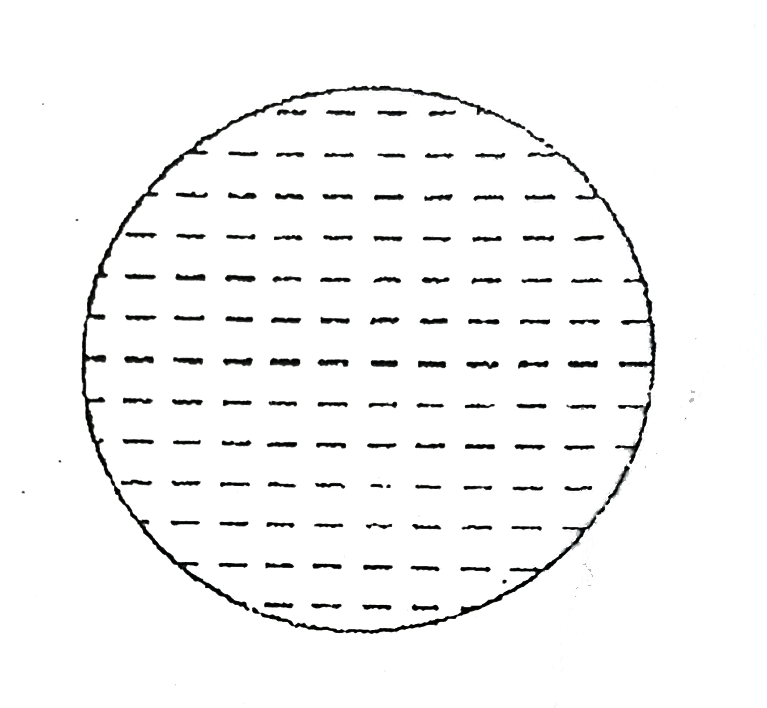Water on a clean glass surface, tends to spread out, while mercury on the same surface, tends to form drops. Why?
To understand why water spreads out on a clean glass surface while mercury forms drops, we need to analyze the concepts of adhesive and cohesive forces.
1. Define Adhesive and Cohesive Forces:
- Adhesive forces are the attractive forces between different substances, such as water molecules and glass molecules.
- Cohesive forces are the attractive forces between molecules of the same substance, such as water molecules with each other.
2. Analyze Water on Glass:
- When water is placed on a clean glass surface, the adhesive forces between water molecules and glass molecules are stronger than the cohesive forces between water molecules.
- This strong adhesive force causes the water to spread out over the glass surface, maximizing the contact area.
3. Analyze Mercury on Glass:
- In contrast, when mercury is placed on the same glass surface, the cohesive forces between mercury molecules are stronger than the adhesive forces between mercury and glass.
- As a result, mercury tends to minimize its surface area and forms drops, as the cohesive forces pull the mercury molecules together more effectively than the adhesive forces can spread them out.
4. Conclusion:
- The behavior of water and mercury on a glass surface can be attributed to the relative strengths of adhesive and cohesive forces. Water spreads out due to stronger adhesive forces, while mercury forms drops due to stronger cohesive forces.
Summary:
- Water spreads out on glass because the adhesive forces between water and glass are greater than the cohesive forces between water molecules.
- Mercury forms drops on glass because the cohesive forces between mercury molecules are greater than the adhesive forces between mercury and glass.
- Adhesive forces are the attractive forces between different substances, such as water molecules and glass molecules.
- Cohesive forces are the attractive forces between molecules of the same substance, such as water molecules with each other.
- When water is placed on a clean glass surface, the adhesive forces between water molecules and glass molecules are stronger than the cohesive forces between water molecules.
- This strong adhesive force causes the water to spread out over the glass surface, maximizing the contact area.
- In contrast, when mercury is placed on the same glass surface, the cohesive forces between mercury molecules are stronger than the adhesive forces between mercury and glass.
- As a result, mercury tends to minimize its surface area and forms drops, as the cohesive forces pull the mercury molecules together more effectively than the adhesive forces can spread them out.
- The behavior of water and mercury on a glass surface can be attributed to the relative strengths of adhesive and cohesive forces. Water spreads out due to stronger adhesive forces, while mercury forms drops due to stronger cohesive forces.
- Water spreads out on glass because the adhesive forces between water and glass are greater than the cohesive forces between water molecules.
- Mercury forms drops on glass because the cohesive forces between mercury molecules are greater than the adhesive forces between mercury and glass.
Topper's Solved these Questions
- PROPERTIES OF MATTERBook:ICSEChapter:PROPERTIES OF MATTERExercise:MODULE 2(SURFACE TENSIONS)LONG ANSWER QUESTIONS
Explore 9 Videos
- PROPERTIES OF MATTERBook:ICSEChapter:PROPERTIES OF MATTERExercise:MODULE 2(SURFACE TENSIONS)SHORT ANWER QUESTIONS
Explore 23 Videos
- PROPERTIES OF MATTERBook:ICSEChapter:PROPERTIES OF MATTERExercise:MODULE 1 (ELASTICITY) FROM WORK DONE IN STRETCHING A WIRE
Explore 4 Videos
- OSCILLATIONS Book:ICSEChapter:OSCILLATIONS Exercise:SELECTED PROBLEMS (OSCILLATION IN A TUNNEL BORED THROUGH THE EARTH)
Explore 2 Videos
- SAMPLE QUESTION PAPER - 01 Book:ICSEChapter:SAMPLE QUESTION PAPER - 01 Exercise:SECTION - D
Explore 12 Videos
Similar Questions
Water drops stick to a glass surface due to
View Solution"On cold water oil spreads, but on hot water it remains in the form of drops." Why?
View SolutionThe sun glasses have curved surfaces, but their power zero. Why?
View SolutionWater meniscus in a glass tube is concave while that of mercury is convex. Why ?
View SolutionWhen a greased iron needle is placed gently on the surface of water at rest, it floats on the surface of water. Why?
View SolutionA liquid drop having surface energy E is spread into 512 droplets of same size. The final surface energy of the droplets is
View SolutionConsider the water drop of radius R. Find surface tension force between the left half surface and right half surface ?

View SolutionSTATEMENT-1: The stream of water flowing at high speed from a garden hose pipe tends to spread like a fountain when held vertically up, but tends to narrow down when held vertically down.
STATEMENT-2: In any steady flow of an incompressible fluid, the volume flow rate of the fluid remains constant.
View SolutionDefine surface tension. Out of water and ethyl alcohol, which has higher surface tension at room temperature ?
View Solution"A drop of oil placed on the surface of water spreads out. But a drop of water placed on oil contracts to a spherical shape". Why?
View Solution

